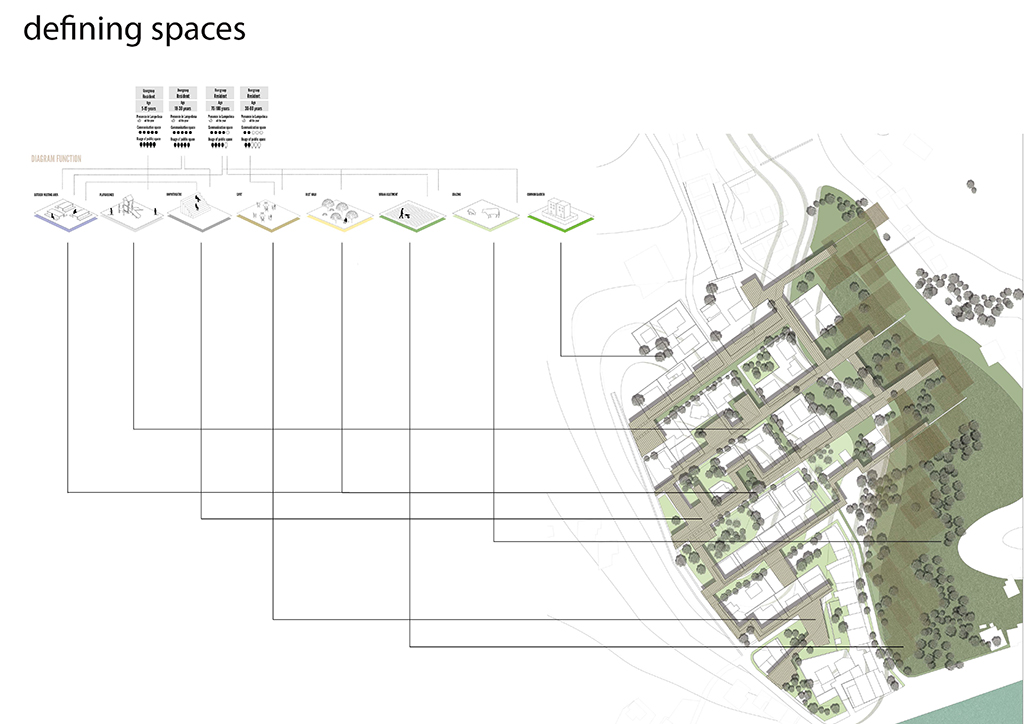2018 Lampedusa Studio master-level design studio @ Technical University Munich
Teaching Staff: Michael U. Hensel, Daniele Santucci, Defne Sunguroğlu Hensel, David Selje, & Thomas Auer
At the start of the semester, students were asked to examine the island of Lampedusa with reference to the Sustainable Development Goals (SDG), laid out by the 2030 Agenda for Sustainable Development.
This inquiry focused on four specific aspects:
- SDG analysis: correlations between individual SDGs to understand the compound nature of sustainability problems and the fact that actions in one SDG will affect other SDGs;
- Status quo analyses: resources, demography, economy, energy, mobility, infrastructure, geography, ecology, and climate;
- State of the art: renewable energy, waste management, fresh water production, climate modulation, food production in hot and dry environments;
- Remote environment strategies for self-sufficiency with examples derived from architectural solutions in extreme environments, with particular focus on ecosystems and multistakeholder and multispecies interaction and integration.
A second phase of analyses focused on local conditions in Lampedusa. The characterization of Lampedusa’s territory is of fundamental importance to the understanding of the complexity of the situation. Students were asked to identify and map different types of principal land use, including urban, suburban, rural, nature, and water. In Lampedusa, the boundary between these areas are frequently ambiguous due to ongoing and often unregulated transformations. Following the analysis of these different areas, students were asked to select zones between two different land uses or with overlapping land use for their design interventions. This resulted in ten types of land-use interfaces: urban–suburban, urban–rural, urban–nature, urban–water, suburban–rural, suburban–nature, suburban–water, rural–nature, rural–water, and nature–water. The objective was to transcend preconceptions regarding the characterization and division of land use into a priori defined patterns and responses. In this way, one land use can inform another and suggest hybrid solutions to singular land-use regulations, and thus new hybrid responses to compound sustainability problems. Furthermore, this enabled a more differentiated understanding of the causes for land-use patterns and dynamics. Students worked in teams on the analyses of their selected areas.A visit to Lampedusa served to acquire further insights in the existing conditions through interviews with locals and visitors.
Students worked in teams of two or three on their selected sites and prepared their own problem definition and project brief. This task requires the ability to identify a potential project based on the progression from data to information (formulation of an inquiry) to knowledge (analysis of the inquiry and identifying potential for an intervention), as well as concurrent adaptation and refinement of the project brief during the design phase. In the preparation of the project brief, students were asked to address:
- Three relevant spatial scales (wider systemic context of which the selected sites are part (i.e., energy, water, etc.); site scale concerning aspects that are characteristic of the site and its participation in wider systems and that can suggest that the project for the site might have a prototypical role for other similar sites; differentiation of conditions in the selected sites, i.e., microclimatic or terrain differences, differences in use, materiality, exposure, etc.);
- Three relevant time scales (what is proposed for now; how can what is proposed for now develop in the near future (scenarios); what is the long-term perspective of the project);
- Three functional scales (what is proposed in a wider systemic scale; what is proposed for the site in terms of scope and specificity of programs, activities, and events; according to which criteria is the program for the site differentiated to meet different already existing latent provisions and in order to inform provisions that need to arise from the proposed architectural, programmatic, and environmental interventions);
- Human and nonhuman actors and stakeholders in the systems, sites, and projects.












The work of the studio is included in the following publications:
Hensel M (2019) Sustainability and Complexity. In Auer T, Santucci D (eds) Transforming Built Environments: Addressing Resource Awareness in Architectural Design Pedagogy. Technical University Munich, Munich, pp 176-181
Hensel M, Santucci D, Sunguroğlu Hensel D, Auer T (2020) The Lampedusa Studio: A multi-method pedagogy for tackling compound sustainability problems in architecture, landscape architecture and urban design education. Sustainability 12(11): 4369. https://doi.org/10.3390/su12114369
